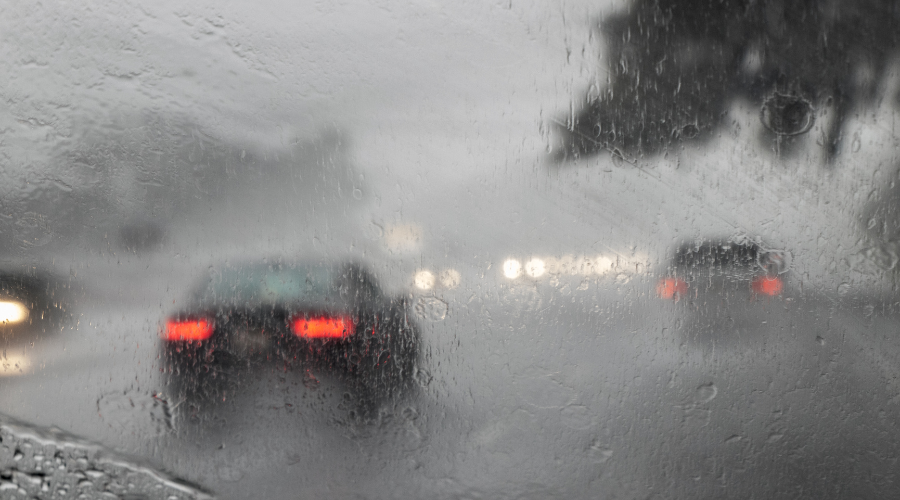There is a direct relationship between the weather and safe driving. Rain, snow, fog, ice, and other weather-related factors increase the risk of a car accident. Here’s a list of different kinds of weather, the driving risks, and ways to prevent accidents.
Dangerous Weather for Drivers
- Rain
Rain makes roads slippery and reduces visibility. Hydroplaning, where a vehicle loses traction and skids on a wet surface, is a significant concern during heavy rain. Reduced braking efficiency and longer stopping distances are also typical challenges in wet conditions.
- Snow and Ice
Vehicles may slide on icy roads, making steering and stopping difficult. Snow accumulation can reduce lane width and limit visibility. Icy patches, especially on bridges and overpasses, pose additional risks.
- Fog
Fog severely limits visibility, sometimes to just a few feet ahead. This reduced visibility increases the risk of rear-end collisions and makes it harder to spot pedestrians, cyclists, or other vehicles on the road.
- Wind
Strong winds affect the stability of vehicles, particularly high-profile vehicles like trucks and SUVs. Gusty winds can cause sudden lane changes, making it challenging to maintain control.

Preventing Weather-Related Accidents
By following these prevention tips and adjusting your driving habits to suit the weather, you can reduce the likelihood of accidents and ensure a safer journey for yourself and others on the road.
- Maintain Proper Following Distance. In bad weather conditions, it’s important to increase the following distance between your car, and the car in front of it. This gives you more time to react to sudden stops and reduces the chances of rear-end collisions (the general rule of thumb is to maintain a minimum three-second gap between you and the vehicle in front of you).
- Reduce Your Speed. Slowing down in bad weather is crucial; lower speeds allow for better control, improved braking distances, and reduced hydroplaning risk. Adjust your speed to match the conditions, even if it means driving below the speed limit.
- Use Your Headlights. Visibility is often affected during bad weather. Always use your headlights, even during the daytime, to ensure that other drivers can see you, and to improve your visibility.
- Check Your Tires. Ensure your tires have adequate tread depth, are properly inflated, and are suitable for the current weather. Consider switching to winter tires if you live in an area with cold winters.
- Brake Smoothly and Gently. Sudden and aggressive braking can lead to skidding, especially on slippery surfaces. Apply the brakes smoothly and gently to maintain control over your vehicle.
- Avoid Distractions. Distracted driving is dangerous under any conditions, but it’s particularly risky in adverse weather. Stay focused on the road, and avoid using your phone or engaging in other distracting activities while driving.
- Plan Ahead. Check the weather forecast before driving, especially for longer trips. If possible, delay your journey or choose an alternative route if severe weather is expected.
- Use Your Vehicle’s Safety Features. Modern vehicles often come equipped with safety features such as ABS (Anti-lock Braking System), ESC (Electronic Stability Control), and traction control. Learn how to use these features effectively to maintain control in bad weather conditions.
- Visibility. Ensure your windshield wipers are in good condition and replace them as needed. Keep your windshield and windows clean to improve visibility.
- Emergency Kit. Carry an emergency kit in your vehicle, including items like a flashlight, blankets, non-perishable food, and water in case you get stranded during severe weather.
Car Accident Support from IDG Legal
If you are ever caught in bad weather conditions and get into an accident on the road, we can help. IDG Legal offers rideshare drivers access to a trusted network of lawyers who are skilled in these types of accidents, and workers’ compensation from The Black Car Fund.
If you need immediate help, tap below and fill out a form.




